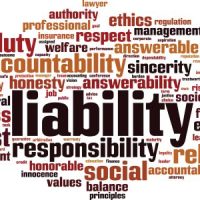Who Is Liable in a Kentucky Multi-Car Pileup?

Multi-car pileups, also known as chain-reaction accidents, are among the most dangerous and confusing types of accidents on Kentucky roads. When three or more vehicles are involved in a crash, determining liability can become particularly complex. Yet, understanding how liability is assigned in these accidents is crucial for anyone involved. If you were involved in a multi-car pileup in Kentucky, keep reading to learn how fault is determined and divided among the drivers involved in these accidents.
Understanding Kentucky’s Choice No-Fault Insurance System
Kentucky operates under a “choice no-fault” system. This means that motorists can accept no-fault coverage via Personal Injury Protection (PIP) or opt out and choose a traditional fault-based insurance policy. Under the no-fault system, your own insurance typically covers your medical expenses, lost wages, and out-of-pocket costs regardless of fault.
However, Kentucky has limits. Under K.R.S. 304.39-060, if your medical expenses exceed $1,000 or you sustain a permanent injury, fracture, loss of bodily function, or disfigurement, you are allowed to step outside of the no-fault system and file a liability claim against the at-fault party or parties. After a multi-car pileup, this can result in multiple claims if more than one driver is found to be liable. This is where Kentucky’s comparative negligence law comes in.
Understanding Kentucky’s Comparative Negligence Law
In Kentucky, liability in car accident cases is governed by the pure comparative negligence rule. Under this law, all the involved drivers are assigned a percentage based on the role each played in causing the accident. Luckily, you can still file a liability claim even if you are found partially at fault for the accident. However, if you share some responsibility, your recovery will be reduced by the extent of your fault.
The pure comparative negligence rule is especially vital in multi-car pileups because these accidents are often caused by the actions of more than one driver. However, determining who triggered the initial impact and whether other drivers acted reasonably to prevent further collisions can be a challenging task.
How Is Fault Determined in a Multi-Car Pileup?
Determining liability in a multi-car pileup requires a thorough investigation by the police, insurance adjusters, and your attorney. Some of the evidence that can be examined to determine what happened includes;
- Police reports
- Vehicle damage patterns
- Eyewitness testimony
- Dashcam, surveillance, or traffic camera footage
- Skid marks or debris at the scene
- Event Data Recorder (EDR) data
Specific factors that are assessed to determine liability in multi-car pileups include;
- Following distances
- Brake timing
- Impaired driving
- Distracted driving
- Speed of the vehicle
- Road conditions
What To Do After a Multi-Car Pileup in Kentucky?
If you are involved in a multi-car pileup in Kentucky, take the following steps to protect your health and legal rights;
- Call 911 and report the accident
- Seek immediate medical help
- Exchange information with all involved drivers
- Take pictures of the accident scene, including vehicle positions, skid marks, and debris
- Contact a Kentucky car accident attorney
A skilled attorney can help you determine liability and handle insurance companies. They can help ensure you receive the compensation you deserve for your injuries and damages.
Contact Us for Legal Help
If you’ve been involved in a multi-car pileup in Kentucky, contact our skilled London & Southeast Kentucky auto accident attorneys at Cessna & George Law Firm for help determining fault, handling insurance companies, and pursuing the compensation you deserve.
Source:
apps.legislature.ky.gov/law/statutes/statute.aspx?id=30030
